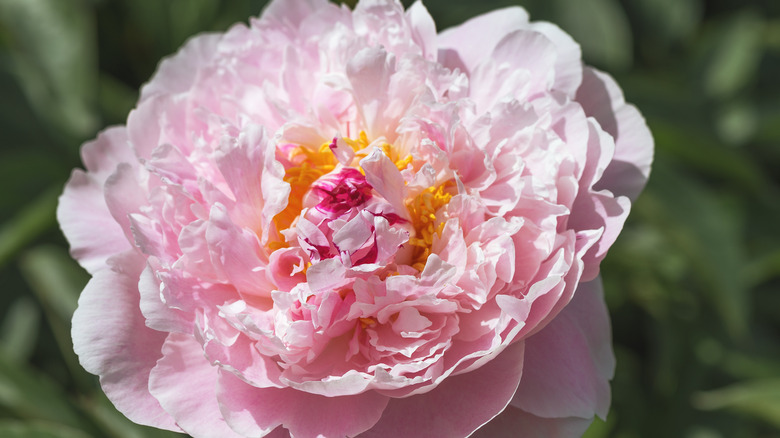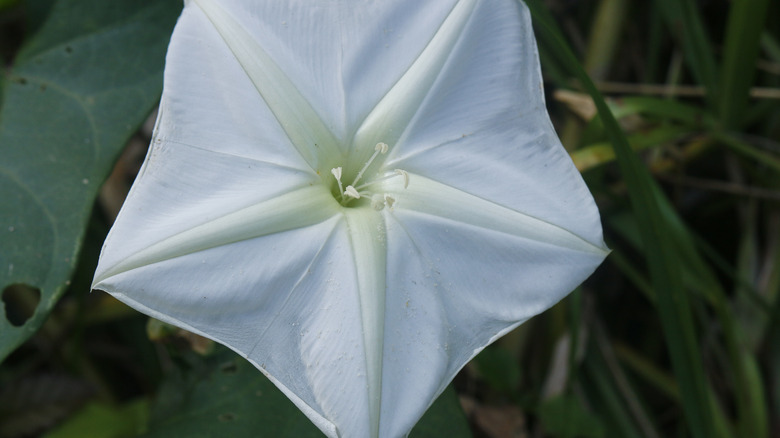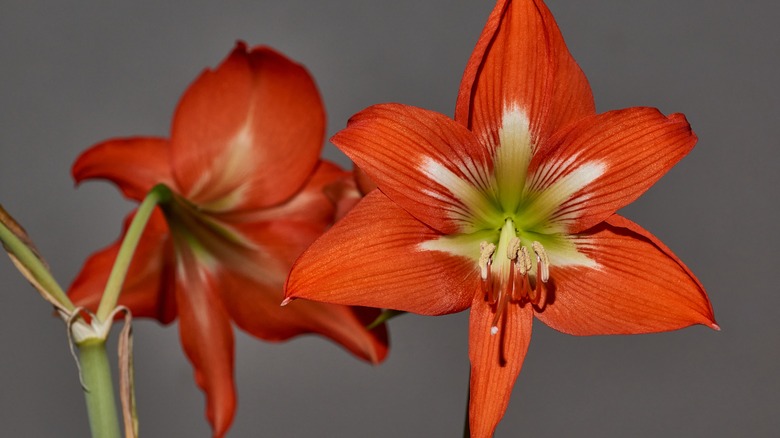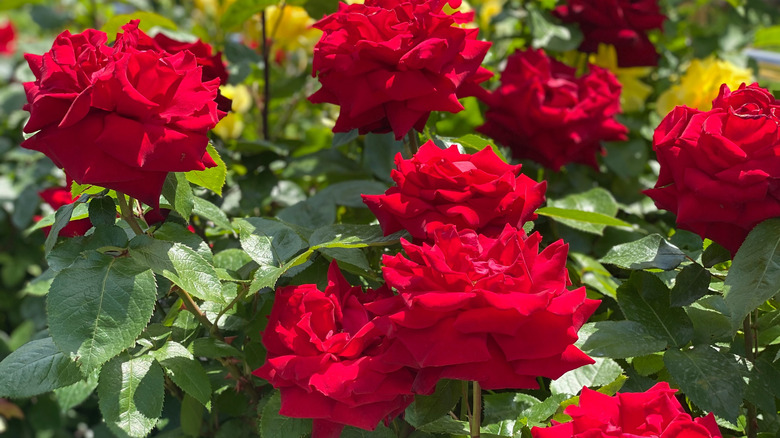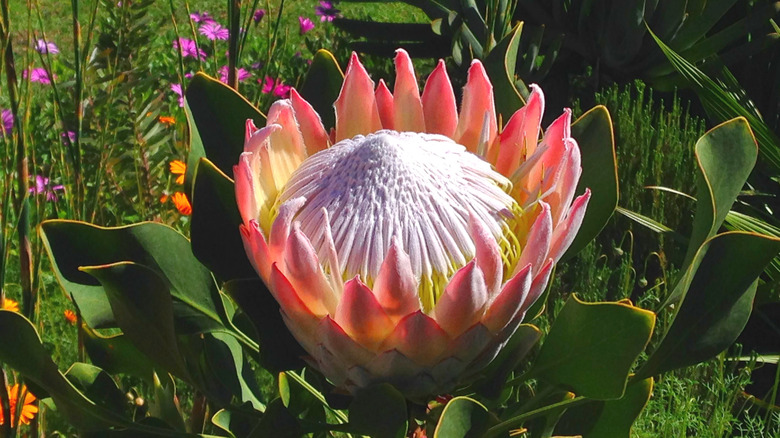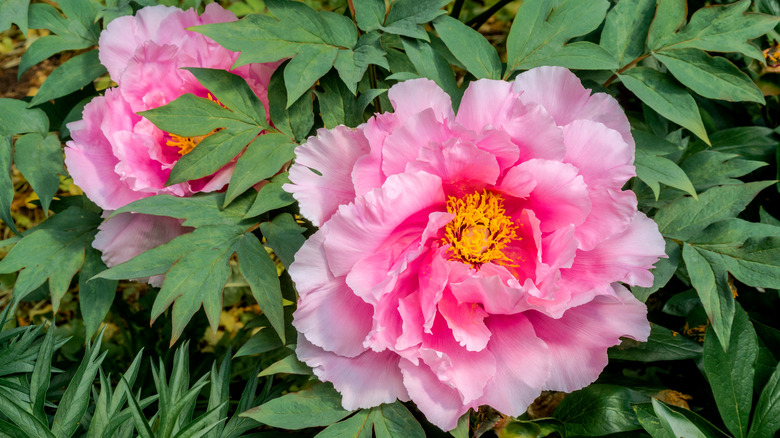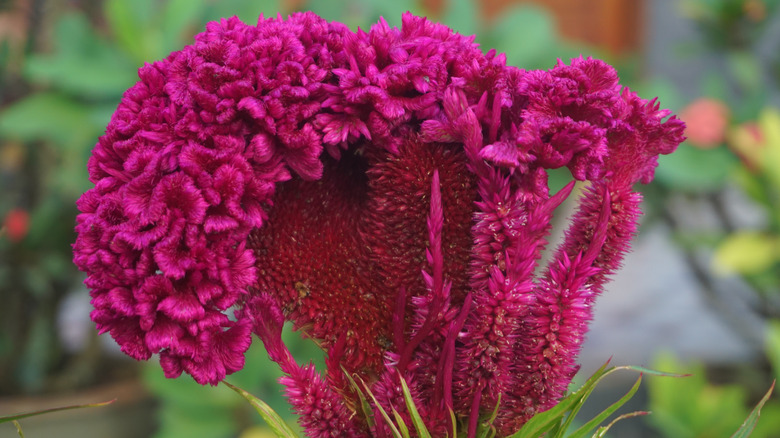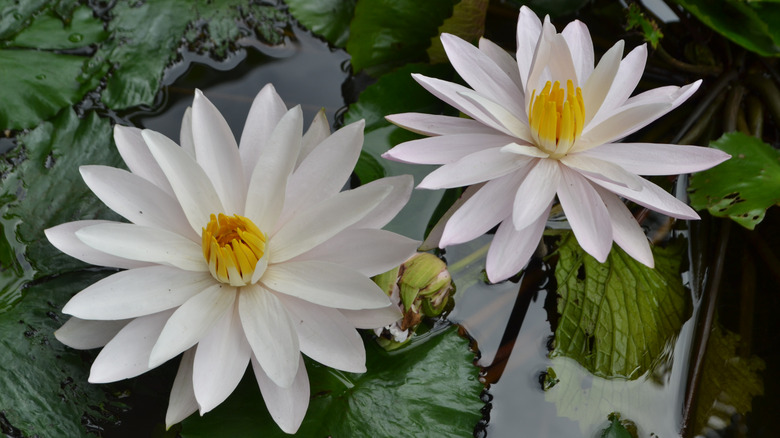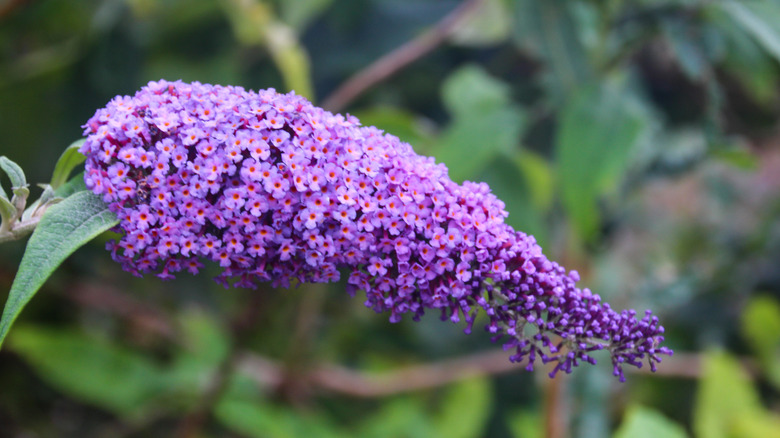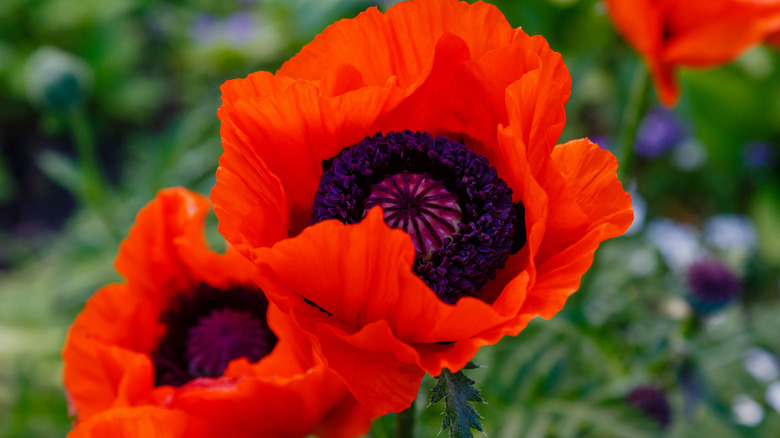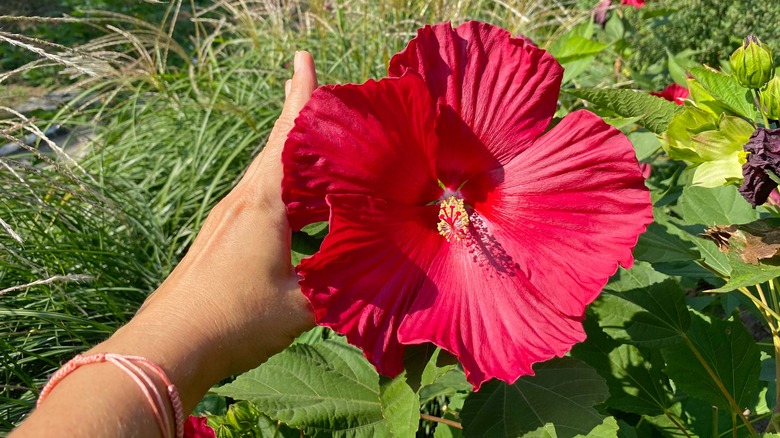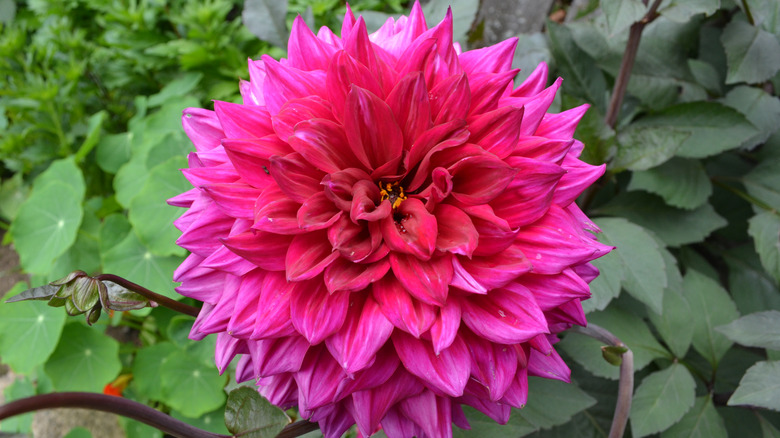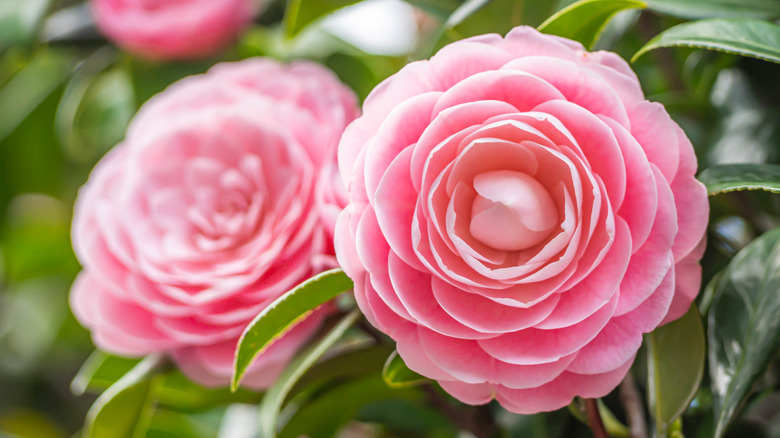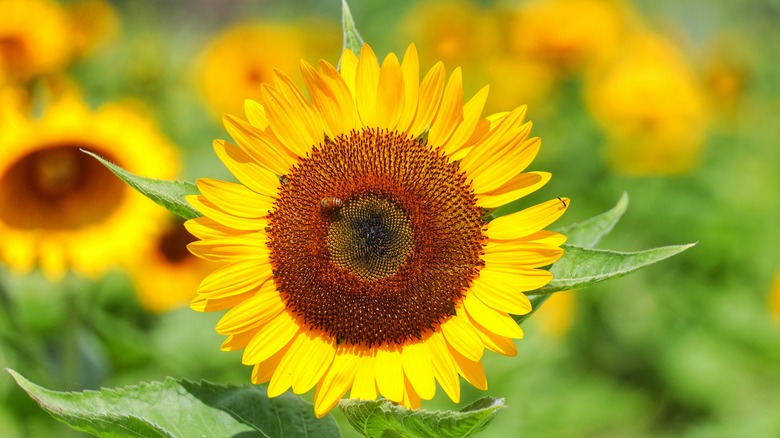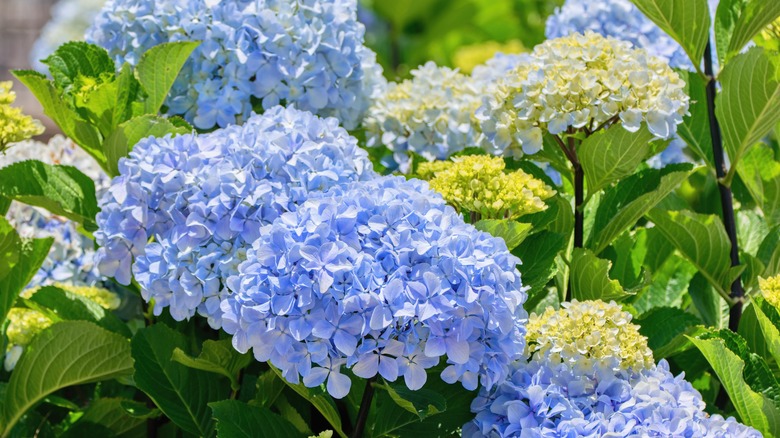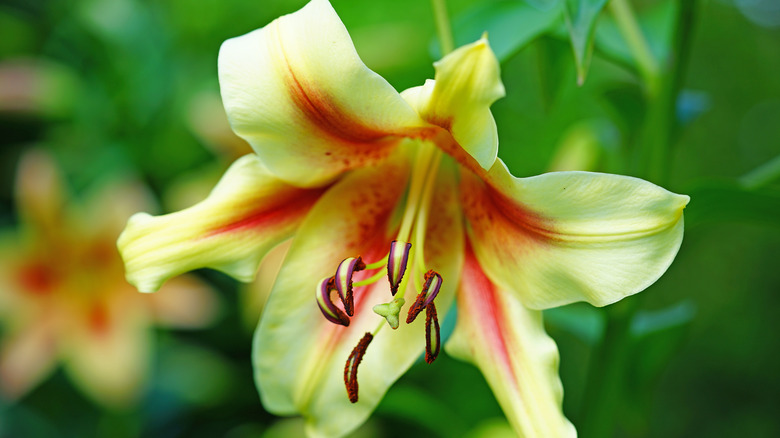15 Plants That Produce Giant Blooms
If you love trying new things in your garden, give giant flowers a try. Though bigger is not always better, the common saying does hold some truth in the garden. Familiar big bloomers such as hydrangeas, peonies, and sunflowers always make a yard pop with their large growth habit and wonderful, several-inch-wide blossoms. Still, there are many more similar plants that you have yet to learn about. You can choose between even more spectacular flowers that include the additional benefits of a sweet scent, vibrant foliage, or low-maintenance care requirements.
Keep in mind that although you can find lots of giant blooming plants, few of them are low-maintenance. Typically, plants with giant flowers require more water, frequent fertilization, and plenty of space to grow. As explained by National Geographic, some of the first flowering plants were low-growing with insignificant blooms. Our favorite flowers in this collection appeared long after herbivorous dinosaurs cleared fertile soil and early mammals further diversified herbaceous plants as their tasty leaves, flowers, roots, fruits, and vegetables kept them fed. Today we enjoy gorgeous large blooming flowers for their aesthetic enrichment, not just for their practical uses.
1. Moonflower
Moonflowers (Ipomoea alba) are vining perennials that get their name from their large, round, and white flowers that only bloom at night. These flowers are lightly fragrant and surrounded by dark green, heart-shaped leaves, as shown by North Carolina State Extension. When growing this large 6-inch-wide flower, be sure to provide it with direct sunlight during the day and consistent moisture.
Bloom Season: Summer and fall
USDA Growing Zone: 10 to 12
Growing Conditions: Full sun
Soil Type: Evenly moist and well-draining
Size: 10 to 15 feet tall and 3 to 6 feet wide
2. Amaryllis
Amaryllis (Hippeastrum spp.) is a popular houseplant, but it can be grown outdoors if your climate is warm enough. Throughout the year, at seemingly random times, the amaryllis plant will produce a flower stalk that will bloom with a large 4 to 10-inch blossom that can have a single or double form depending on the cultivar you purchase, as explained by the University of Minnesota.
Bloom Season: May bloom at any time during the year
USDA Growing Zone: 9 to 11
Growing Conditions: Partial shade
Soil Type: Well-draining and organic
Size: 1 to 2 feet tall
3. Hybrid tea rose
Hybrid tea roses (Rosa spp.) are among the most beautiful roses ever grown. They boast huge, fragrant flowers throughout the growing season and they are relatively easy to grow, as per Washington State University. If you're looking to plant a stunning flower garden, hybrid tea roses are a staple that you should consider.
Bloom Season: Spring to fall
USDA Growing Zone: 7 to 11
Growing Conditions: Full sun
Soil Type: Well-draining
Size: 4 feet tall and wide
4. King protea
King protea (Protea cynaroides) are a species of relatively small shrubs that produce giant bowl-shaped flowers that can measure up to 11 inches across, as described by RHS. This plant, which looks great in border gardens, containers, and cut flower gardens, boasts evergreen foliage and blooms during the spring and summer. As a warm-weather shrub, you should keep the flower in direct sunlight and water it sparingly while it's dormant.
Bloom Season: Spring and summer
USDA Growing Zone: 9 to 12
Growing Conditions: Full sun
Soil Type: Well-draining
Size: 40 to 60 inches tall and wide
5. Tree peony
Tree peonies (Paeonia suffruticosa) come in many different flowering colors, sizes, and forms. They can be found in single, semi-double, and double forms that may be red, pink, purple, yellow, white, or rose, as noted by Missouri Botanical Garden. Remember that the deciduous shrub that these flowers bloom on can grow up to 5 feet tall, so this plant will need plenty of room to grow.
Bloom Season: Spring
USDA Growing Zone: 4 to 8
Growing Conditions: Full sun to partial shade
Soil Type: Well-draining
Size: 3 to 5 feet tall and 3 to 4 feet wide
6. Cockscomb
Cockscomb (Celosia argentea var. cristata) is a unique flowering annual that blooms in six different colors. The cockscomb flower appears in the summer and lasts until fall in most places, according to Cornell University, and it is named after its resemblance to rooster combs.
Bloom Season: Summer and fall
USDA Growing Zone: 2 to 11
Growing Conditions: Full sun to partial shade
Soil Type: Fertile and well-draining
Size: Up to 3 feet tall and 1 foot wide
7. American white waterlily
The American white waterlily (Nymphaea odorata) will not be easy for everyone to grow. It requires some specific care, such as being planted in a water garden or pond. However, if you do have the right setup for this large 6 to 9-inch bloomer, it will reward you with vigorous growth and fragrant flowers, as mentioned by North Carolina State Extension.
Bloom Season: Summer to early fall
USDA Growing Zone: 4 to 11
Growing Conditions: Full sun
Soil Type: Standing water or consistently moist and mucky soil
Size: 2 to 20 feet long
8. Butterfly bush
The butterfly bush (Buddleia davidii) is named after its ability to attract some species of butterflies that enjoy the plant's clustered flowers. Unfortunately, as warned by Oregon State University, this bush is considered invasive in some places, including Oregon, New Zealand, and England. Still, you can buy seedless cultivars of this plant as approved by your local department of agriculture.
Bloom Season: Summer
USDA Growing Zone: 5 to 11
Growing Conditions: Full sun
Soil Type: Well-draining
Size: 8 to 12 feet tall
9. Oriental poppy
Oriental poppies (Papaver orientale) are known to be great perennial garden flowers that pop up each spring to show off their 4 to 8-inch, yellow, red, orange, white, or pink blossoms. Most regions in the United States can support the growing requirements of this poppy flower native to Central Asia. Just be sure you provide it with a full sun location and well-draining soil to grow in, as suggested by High Country Gardens.
Bloom Season: Late spring
USDA Growing Zone: 3 to 7
Growing Conditions: Full sun
Soil Type: Well-draining
Size: 3 feet tall and 2 feet wide
10. Hardy hibiscus
Hardy hibiscus (Hibiscus moscheutos) is a perennial plant that grows in wet or moist soils as well as shallow standing water. The flower is native to the United States, and it can often be found growing in ditches, mallows, and swamps east of the Midwest. At maturity, most hardy hibiscus bloom with saucer-shaped flowers that can be up to 12 inches across, as described by New Moon Nursery.
Bloom Season: Summer
USDA Growing Zone: 5 to 8
Growing Conditions: Full sun
Soil Type: Rich and wet
Size: 4 to 7 feet tall and 3 to 4 feet wide
11. Dinner-plate dahlia
The dinner-plate dahlia (Dahlia 'Emory Paul') is named for its huge flowers that are commonly 12 to 14 inches in diameter. Typically, the flowers this dahlia forms are pink in color, and they appear in the middle of summer. By the first frost, the flowers will die away, but they will reappear the next summer, as explained by High Country Gardens.
Bloom Season: Summer to fall
USDA Growing Zone: 2 to 10
Growing Conditions: Full sun
Soil Type: Acidic and well-draining
Size: 36 to 40 inches tall
12. Japanese camellia
Japanese camellia (Camellia japonica) is a good option for flower gardens in need of a hedge for privacy reasons. This shrub can grow up to 15 feet tall, and its dense stems support a wonderful floral display during the colder months in USDA zones 7 through 10, notes Oregon State University. There are many Japanese camellia flower cultivars, so you can choose from delicate single blooms or large peony-like flowers.
Bloom Season: Winter to spring
USDA Growing Zone: 7 to 10
Growing Conditions: Full sun to part shade
Soil Type: Well-draining
Size: Up to 15 feet tall
13. Common sunflower
Sunflowers (Helianthus annuus) are known across the United States for their tall stems and wide flowers that are normally yellow and brown. One interesting fact about the common sunflower is that its bloom is not just one flower. It is actually a cluster of flowers that form a head of ray florets and disc florets, as taught by the California Native Plant Society.
Bloom Season: Summer to fall
USDA Growing Zone: 2 to 11
Growing Conditions: Full sun
Soil Type: Rich, loose, and well-draining
Size: 5 to 10 feet tall and 2 feet wide
14. Hydrangea
Hydrangeas (Hydrangea macrophylla) are recognized for their round groups of flower types known as mopheads and lacecaps in between the plant's green and fleshy leaves. These clusters of flowers present themselves in the summer, and they are typically blue, pink, purple, or white. Some special cultivars, however, can instead show off red, white, or green blooms, as shown by North Carolina State Extension.
Bloom Season: Summer
USDA Growing Zone: 6 to 11
Growing Conditions: Dappled sunlight to full shade
Soil Type: Evenly moist and well-draining
Size: 3 to 6 feet tall and wide
15. Orienpet lily
The orienpet lily (Lilium orania) is an easy-to-grow member of the Liliaceae family that is native to Europe, North America, and Asia. Often, the plant's orange-yellow flowers are cut and used for floral arrangements, but the showy blossoms can look just as good when grown in a border garden, mass planting, or another flower garden, as stated by Missouri Botanical Garden.
Bloom Season: Summer
USDA Growing Zone: 5 to 9
Growing Conditions: Full sun to partial shade
Soil Type: Evenly moist and well-draining
Size: 3 to 4 feet tall and 12 to 18 inches wide
